|
Chorale Melodies used in Bach's Vocal Works
Ein feste Burg ist unser Gott |
|
Melody & Text | Use of the CM by Bach | Use of the CM by other composers |
| |
|
Melody & Text: |
|
Martin Luther’s hymn is a free translation of Psalm 46 and probably was written for the Diet of Speyer in 1529. The tune was adapted by M. Luther, certainly from the Roman Gradual. Words and melody were published together in 1531 and again in Klug’s Wittenberg Hymn-book in 1535. J.S. Bach uses the tune in Cantata BWV 80 (1730); Choralgesänge, Nos. 74-5; and the movement infra. Only in the Organ movement does he exactly follow the 1535 text in the fifth line of the melody (line 2 supra). Witt’s (No. 482) text shows the same fidelity to the original.
Source: Charles Sanford Terry: Johann Sebastian Bach, Bach’s Chorals, vol. 3 The Hymns and Hymn Melodies of the Organ Works (1921), pp 141-142 |
|
Melody: Zahn 7377
Composer: Martin Luther (1529) |
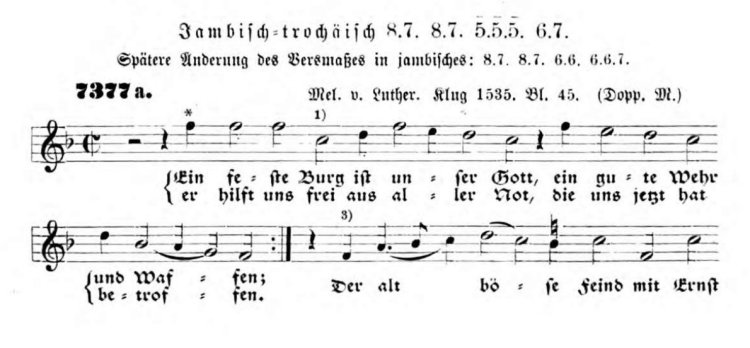
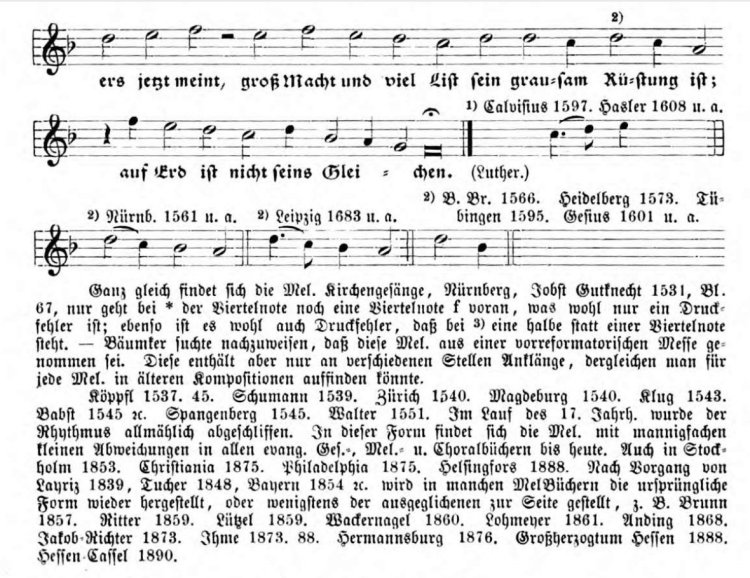 |
|
Text: Ein feste Burg ist unser Gott (NLGB 255; EG 362)
Author: Martin Luther (1529) |
|
Hymnal versions Bach may have known: |
|
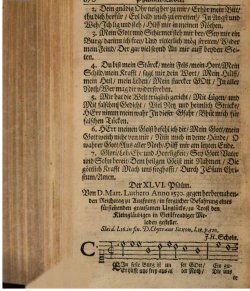
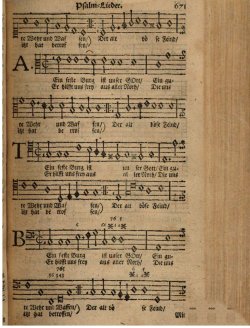
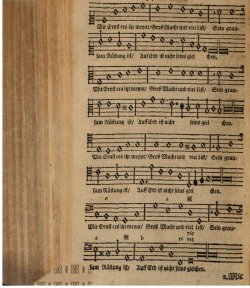
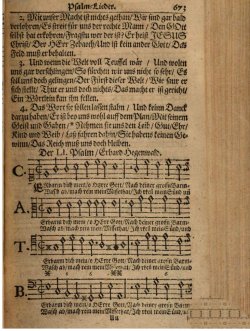
|
|
Melody & text of Ein’ feste Burg (NLGB
255) from the Neu Leipziger Gesangbuch, pp 670-673 |
| |
| |
|
Use of the Chorale Melody by Bach: |
|
Text: Ein feste Burg ist unser Gott |
|
Cantata BWV 80 |
|
A Choral Cantata , on M. Luther’s Hymn, “Ein’ feste Burg,” a free version of Psalm xlvi, probably written for the Diet of Speyer in 1529, though an earlier origin has been suggested. It was first published by Klug in 1535 [1529] (infra).
The melody, which dominates the Cantata and forms the subject of four of its movements, is quoted above from Joseph Klug’s Geistliche Lieder zu Wittemberg (Wittenberg, 1535), where it appears in association with M. Luther’s Hymn. Both tune and words, however, are found in Jobst Gutknecht’s Kirchē gesenge, mit vil schonen Psalmen unnd Melodey (Nurnberg, 1531), and in Klug’s collection of M. Luther’s Hymns. That the melody in its present form is by M. Luther is generally agreed; but the extent to which he was indebted to Gregorian material is in dispute.
The melody does not occur elsewhere in the Cantatas, Oratorios, or Motetts. There are two harmonisations of it in the Choralgesange, Nos. 74, 75 (BWV 302, BWV 303). Organ Works, N. xviii. 30. 284 (BWV 720).
Source: Charles Sanford Terry: Johann Sebastian Bach, Bach’s Chorals, vol. 2 The Hymns and Hymn Melodies of the Cantatas and Motetts [1917], pp 284-286 |
|
Chorus Ein feste Burg ist unser Gott (Mvt. 1) from Cantata BWV 80 |
|
The words of the opening movement are the first stanza of M. Luther’s Hymn.
Translations of the Hymn into English are noted in the Dictionary of Hymnology, pp. 324-325, 1561, 1631, 1729.
Form. Choral Fantasia. The cantus is treated freely and fugally (3 Trombe, Timpani, 2 Ob., Strings, Organ1). |
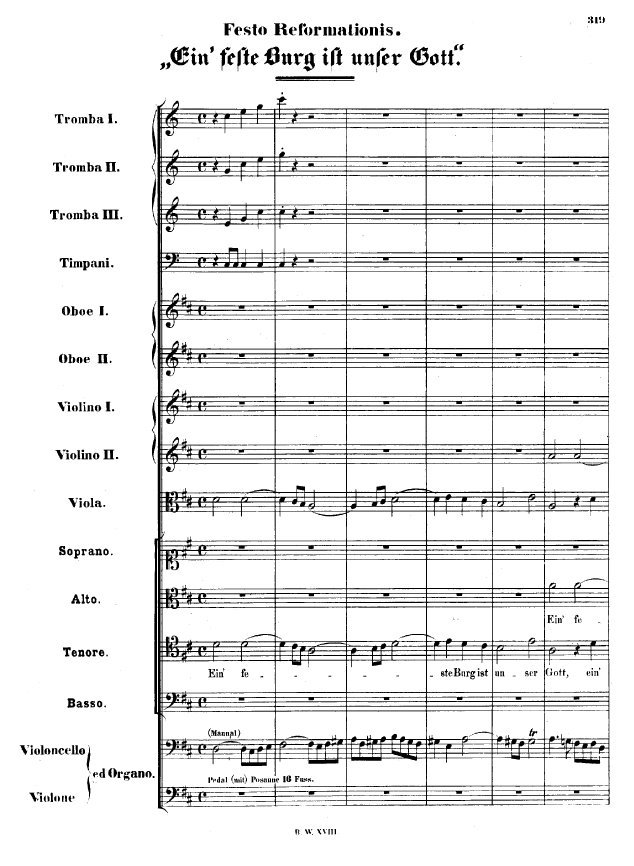 |
|
Aria for Bass w/ Chorale for Soprano Alles, was von Gott geboren (Mvt. 2) from Cantata BWV 80 |
|
The words of the second movement are the second stanza of M. Luther’s Hymn.
Form. Marked “Aria,” the movement is a Duetto for Bass and Soprano, the latter singing a florid and free version of the Choral melody (Oboe, Strings, Continuo). |
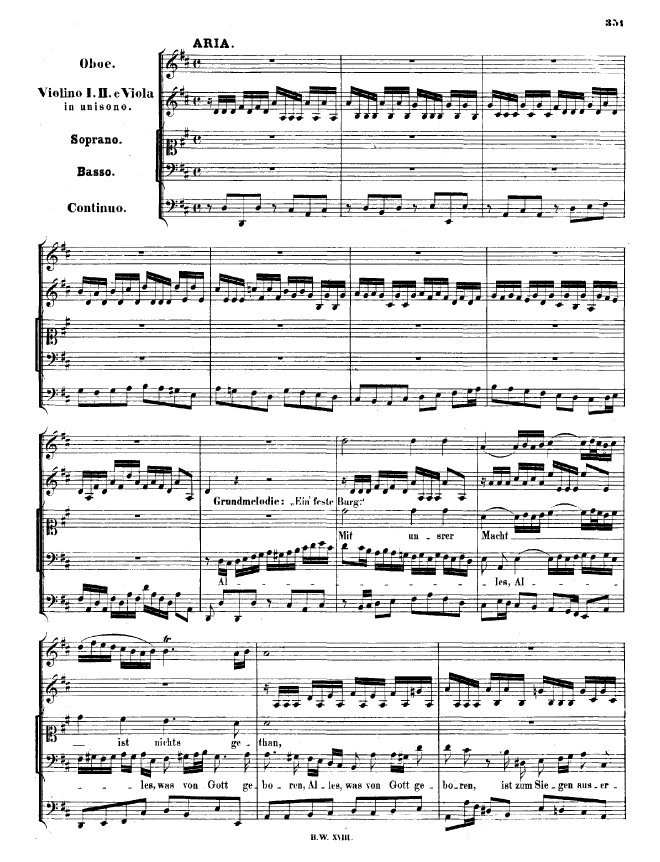 |
|
Chorale Und wenn die Welt voll Teufel wär (Mvt. 5) from Cantata BWV 80 |
|
The words of the fifth movement are the third stanza of M. Luther’s Hymn.
Form. A Choral Fantasia, in form an Unison Chorus (3 Trombe, Timpani, 2 Ob. d’amore, Strings, Continuo). |
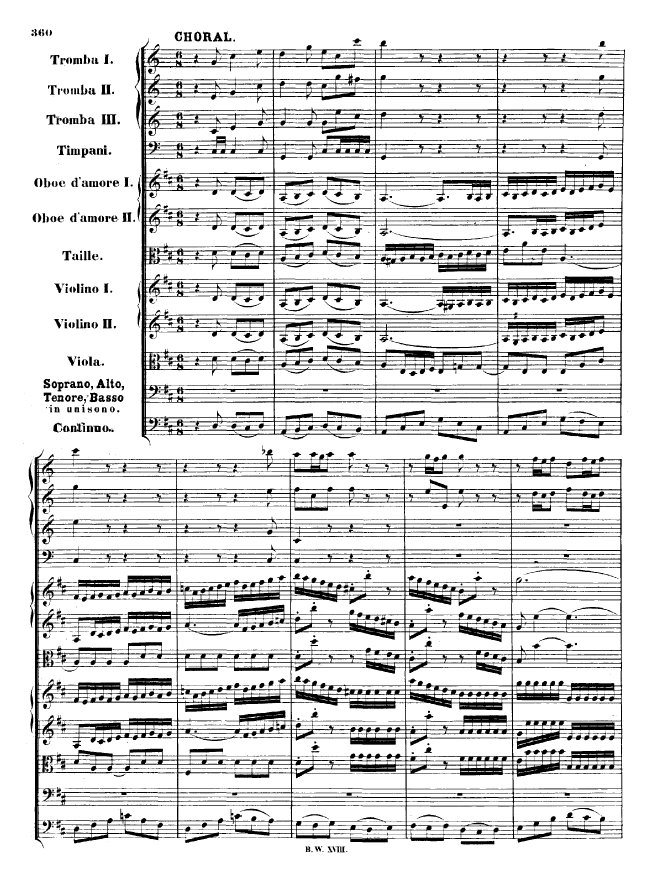 |
|
Chorale Das Wort sie sollen lassen stahn (Mvt. 8) from Cantata BWV 80 |
|
The words of the concluding movement are the fourth stanza of M. Luther’s
Hymn.
Form. Simple (Continuo) . Choralgesange, No. 76. |
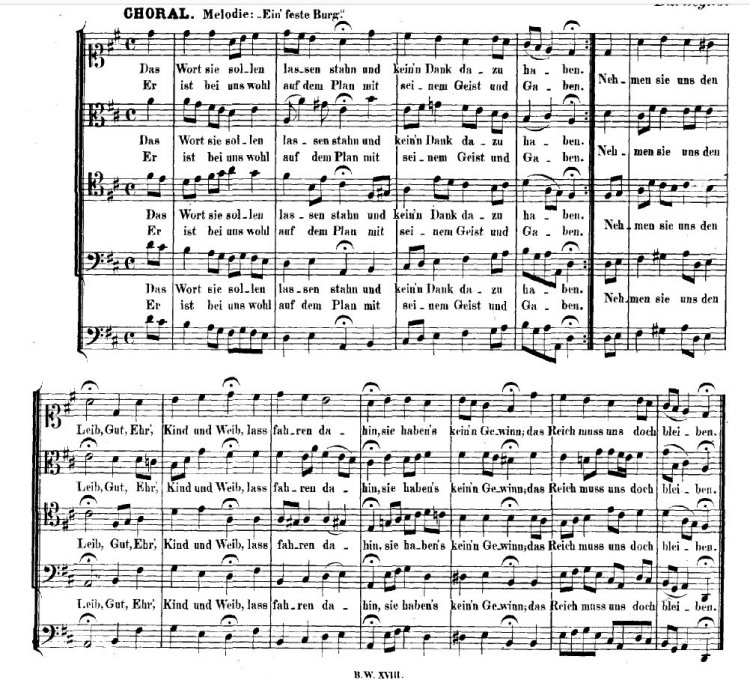 |
|
Chorus Ein feste Burg ist unser Gott (Mvt. 1) from Cantata BWV 80b |
|
Chorale Ein feste Burg ist unser Gott, BWV 302
Ref: RE 20; Br 20; KE 74; Birnstiel 23; Dietel 64; AmB 46II p.157 & p.276; Levy–Mendelssohn 26; Fasch p.42; NGA 49; BC F53.1; CSR 77 |
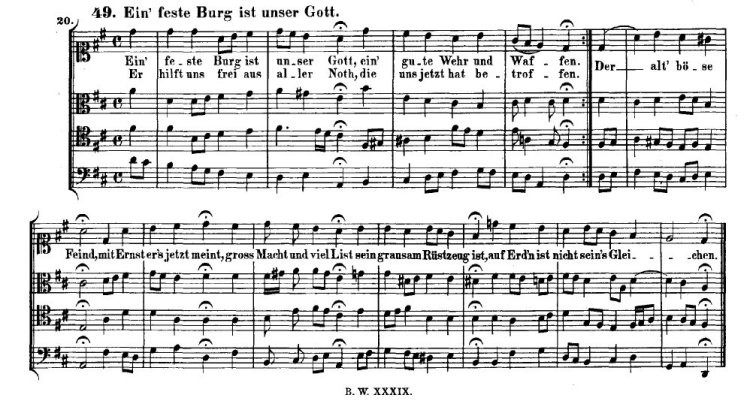 |
|
Chorale Ein feste Burg ist unser Gott, BWV 303
Ref: RE 250; Br 250; KE 75; Dietel 3; AmB 46II p.219; BGA 50; BC F53.2; CST 78 |
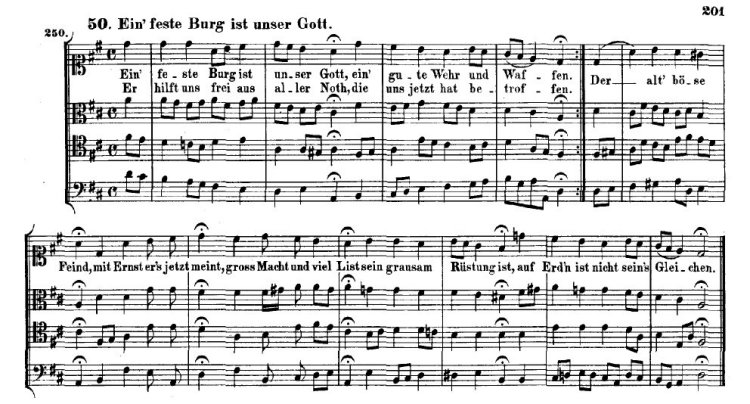 |
|
Untexted: |
|
Chorale Prelude Ein feste Burg ist unser Gott, BWV 720 [by Johann Michael Bach] |
|
Observe how triumphantly Bach brings out on the Pedal (p. 32, bars 2-9) two lines of stanza ii:
Er heist Jesu Christ,
Der Herr Sabaoth.
Jesus Christ is He,
Of Sabaoth Lord.
Copies of the movement are among the Kirnberger, Krebs, and Walther mss. |
 |
|
Use of the Chorale Melody by other composers: |
| |
| |
|
Sources: Bach Digital; BGA; Zahn
Photos from Gottfried Vopelius Neu Leipziger Gesangbuch (Vopelius 1682), were taken from a digital copy of the book downloaded from Bayerische Staatsbibliothek München. This copy is Out of copyright - non commercial re-use (Europeana Rights).
Prepared by Aryeh Oron (October 2018) |